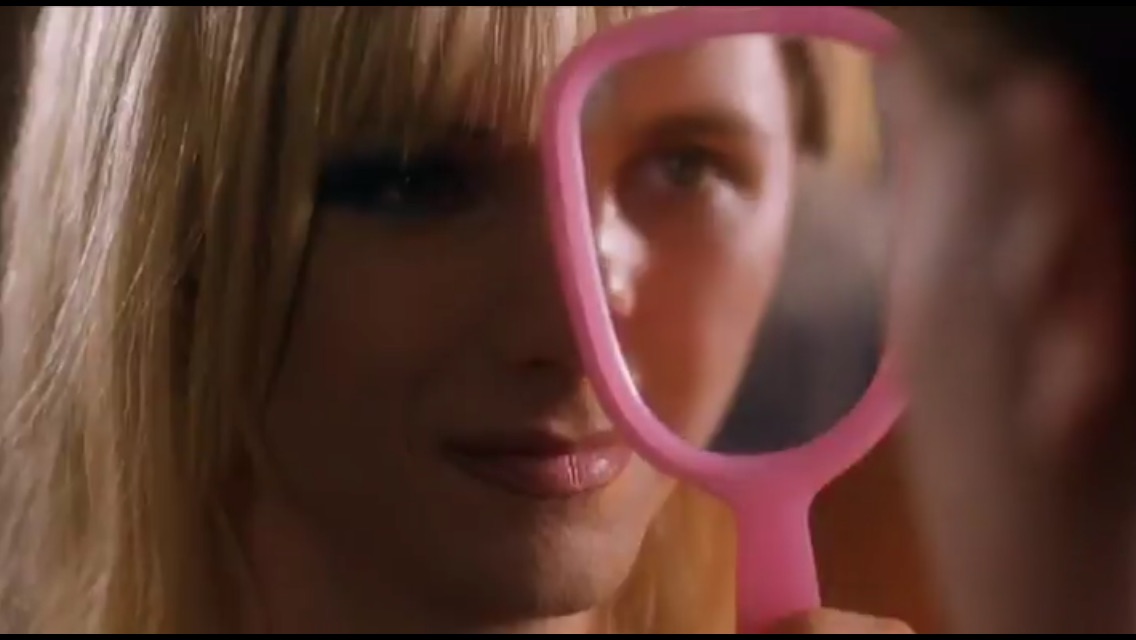stage and screen
I'm reminded of Feuer (1995): "The musical, technically the most complex type of film produced in Hollywood [though, really, Hedwig was filmed in Toronto], paradoxically has always been the genre that attempts to give the greatest illusion of spontaneity and effortlessness" (p. 447).
Hedwig and the Angry Inch, though it involves plenty of camera setups, some rather involved (with the live performances and whatnot) and animated sequences, still comes across quite spontaneous. Roger Ebert calls the filmmaking as "free-form as such movies as 'Pink Floyd the Wall.'" And, that's sort of the point. At any given moment, we could be staring at an outlandish live performance, watching a profoundly simply designed animated sequence or enjoying a painful flashback. That's what makes the film more real. Like life, it doesn't all flow neatly start to finish. Sometimes, life gets bogged down in moments from the past, in flights of fancy...
And yet, the film follows a fairly basic 3-act structure (or is it a 4-act structure? The halfway point would be Hedwig giving Tommy a handjob). And, it separates itself from the stage production that preceded it, leaving aside the performance setups when it needs to give us something more concrete. With impossible setups like the band playing outside Hedwig's trailer for "Hedwig's Lament." The latter bit both adds to and subtracts from the verisimilitude of the scene. The scene is both intimate--the camera moving around with Hedwig, giving us obvious markers of theme like the mirror, the wigs--and quite open... literally, as the band comes inside the one side of the trailer falls open to become a performance stage. Oh, and there's less obvious markers of theme, like a copy of Edge of Awareness beneath the childhood photo of Hedwig/Hansel.
(Edge of Awareness is a book of essays edited by Richard Peck. The general theme of the essays... according to one Amazon reviewer (though the book seems interesting, I do not have my own copy), "the meaning of self, society, science, and the meaning of it all." Of course, another reviewer says, "Mostly dull reading. But looks good on my bookshelf." So, to each his own. Maybe it's not worth anything. The point is that a) Hedwig is curious about herself and b) the movie is curious about self in general. Hedwig and Tommy both are reinvented, not entirely by themselves. Self, in this film, is malleable. Even Luther's pause upon discovering that Hansel is a boy then deciding to go for him anyway suggests a flexibility in gender and identity...)
The structure then, puts Luther in either the first half of the second of three acts or as the driving force of all of the second of four. Tommy then provides the flipside of the second of three acts or drives the third of four acts... the effect is the same. Actually, given the dualities all over the place in the film, I like the idea of Luther and Tommy as two halves of one act. Two potential new halves for Hedwig... but that's getting into "The Origin of Love" and that will come another day.

And, sometimes life (and a blog entry) doesn't go quite how you want it to go. My blu-ray player froze and I got stuck watching the last 20 minutes of the movie on my phone, which distracted from a research source I wanted to get into (about how the film skips over so many key moments that, in a different story, would have taken center stage) and messed with my flow. So, imagine an ending to this entry that makes sense. Imagine that this entry flows perfectly from start to finish, even though it was already a little choppy.
I'll reinvent this tomorrow.
Works CitedEbert, R. (2001, August 3). Hedwig and the Angry Inch [Review]. Retrieved from http://www.rogerebert.com/reviews/hedwig-and-the-angry-inch-2001Feuer, J. (1995). The self-reflexive musical and the myth of entertainment. In B.K. Grant (ed.), Film Genre Reader II (441-455). Austin, TX: University of Texas Press.
Comments
Post a Comment